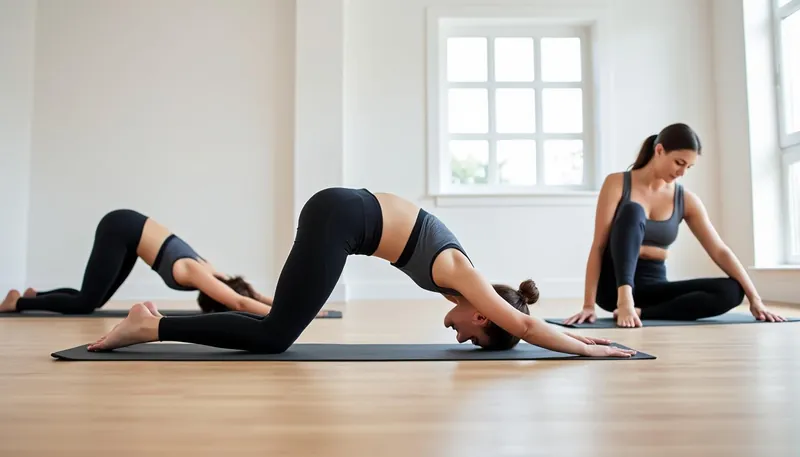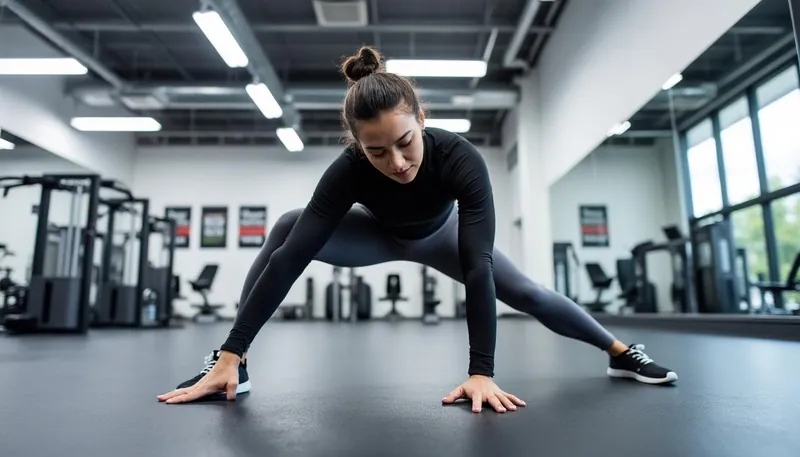Are you looking to improve your flexibility? If so, you’re not alone. Flexibility plays a crucial role in our daily activities and athletic performances, whether it’s reaching for something on a high shelf, bending down to tie your shoes, or mastering that perfect yoga pose. Along with strengthening muscles, flexibility enhances joint mobility and helps prevent injuries. But how often should you stretch to achieve these benefits? The details can be a bit more complex than you might think. In this article, we will delve into the different aspects of stretching, exploring optimal frequencies, techniques, and related tips to help you reach your flexibility goals.
Many often believe that stretching is merely an afterthought in their workout routine. However, integrating a regular stretching practice is essential for everyone, regardless of activity level. Whether you’re an athletic superstar adorned with Nike gear or someone who enjoys Pilates with Lululemon leggings, recognizing the importance of stretching can significantly enhance your overall wellness. We need to figure out just how often we should be stretching each muscle group and which methods yield the best results.
The Science Behind Stretching Frequency
To understand stretching frequency effectively, let’s first consider how stretching impacts our bodies. Research indicates that maintaining flexibility is vital to functional independence as we age, directly improving daily physical activities. The American College of Sports Medicine (ACSM) recommends that adults should stretch each major muscle group at least twice a week, holding each stretch for about 60 seconds. Simple enough, right?
However, it’s also important to realize the cumulative effects of stretching. A recent study aggregated data from hundreds of studies involving thousands of adults and concluded that holding any stretch for around four minutes actively contributes to immediate flexibility improvements. Still, for long-term benefits, the recommendation shifts, suggesting a total of around ten minutes of stretching per muscle group each week can facilitate significant lasting improvements.
One component to consider is the type of stretch you engage in. Traditional static stretching is the most common approach, wherein you hold a position to lengthen a muscle. This method promotes greater flexibility but should ideally be performed after workouts when your muscles are warm. A mixture of static stretching post-exercise, along with dynamic stretches before training, like the Standing Cat-Camel exercise, can effectively set the stage for enhanced performance.
Key Takeaways on Stretching Frequency
- Stretch each muscle group at least twice per week 🔄
- Hold each stretch for around 60 seconds for optimum benefits ⏳
- Aim for at least ten total minutes of stretching per week per muscle group 🕑
- Dynamically warm up before workouts, static stretch afterward 💪

Types of Stretching Techniques: What Works Best?
When it comes to stretching, variety can often be the key to success. Different methods serve distinct purposes and can cater to unique flexibility goals. Let’s break these down into categories.
Static Stretching: This is the go-to technique for most people. It’s defined by the act of holding muscles in a stretched position for a prolonged period, typically between 15 to 60 seconds. It’s particularly effective for improving overall muscle length and flexibility. However, ensuring you don’t experience pain while stretching is crucial to avoiding injury—pain-free stretching is the ideal goal.
Dynamic Stretching: Unlike static stretching, dynamic stretching involves moving parts of your body through a full range of motion actively. It’s an effective warm-up method that prepares your muscles and increases blood flow, ensuring performance peaks during your workout. Think of movements like leg swings or arm circles, serving as an excellent prelude to any physical activity.
PNF Stretching (Proprioceptive Neuromuscular Facilitation): A fan-favorite among athletes, PNF involves a combination of isometric contraction and static stretching. It requires a partner but can remarkably enhance flexibility by utilizing both stretching and strengthening actions. Research has shown that this method can be especially effective for improving overall range of motion.
Benefits of Each Stretching Technique
| Stretching Technique | Benefits |
|---|---|
| Static Stretching | Increases muscle length and flexibility 🌈 |
| Dynamic Stretching | Prepares muscles for activity and enhances blood flow 🚀 |
| PNF Stretching | Maximizes range of motion and combines strength with flexibility 💡 |
When is the Best Time to Stretch?
Timing your stretches can drastically affect their effectiveness and safety. Many individuals wonder, « Is it better to stretch before or after a workout? » Current research suggests that stretching before a workout isn’t necessary. Instead, engaging in dynamic stretching during your warm-up is the way to go. It allows your body to adjust and respond appropriately to increased physical demands without jeopardizing performance.
After exertion completes is the optimal time for static stretching. Following your workout, muscles are warm, blood is flowing effectively, and your body will benefit from the enhanced range of motion and relaxation that static stretching provides. This habit can help mitigate soreness and tension built up during the workout, a vital component as you move towards recovery.
Best Moments to Incorporate Stretching
- Morning to kickstart your day with energy ☀️
- Before physical activity to prepare your body 🤸♂️
- After workouts to relax and enhance flexibility 🌌
- During the day at desk breaks to relieve tension 🧘♂️

Designing Your Stretching Routine
Crafting a personalized stretching routine is crucial for ensuring progress and maintaining flexibility. You need to consider certain factors when creating your program, such as your schedule, specific flexibility goals, and potential physical limitations.
A flexible approach allows you to adapt the routine based on your lifestyle. For example, if you’re an office worker, integrating quick stretches into your breaks can be beneficial. Aim for at least 2 minutes of stretching every hour to combat postural strain. On the other hand, if you’re an athlete, including a detailed post-exercise routine can enhance recovery and performance. Utilizing brands like StretchLab or YogaWorks can provide tailored guidance and classes if needed.
Sample Stretching Routine
| Stretch | Duration | Frequency |
|---|---|---|
| Hamstring Stretch | 30 seconds | 3 times weekly |
| Quadriceps Stretch | 30 seconds | 3 times weekly |
| Shoulder Stretch | 30 seconds | Every day |
Understanding Individual Needs and Limitations
It’s essential to remember that everyone’s bodies respond differently to stretching. Factors such as age, sex, and overall fitness can affect your flexibility goals. The ideal stretching routine might look different for a senior citizen focused on maintaining mobility compared to a professional athlete trying to boost performance. Consequently, recognize your limits and tailor your routine accordingly.
A session with a qualified health professional or physiotherapist can provide you with tailored advice and a stretching plan personalized specifically to your needs. Proper guidance can ensure you make the most of your flexibility journey and enhance overall wellness.
How long should I hold each stretch?
Holding each stretch for about 15 to 30 seconds is ideal for effectiveness.
Is it necessary to stretch every day?
It’s not mandatory, but incorporating stretching into your routine regularly offers multiple benefits.
Can stretching prevent injury?
While stretching alone may not prevent injuries, it does play a role in enhancing flexibility and reducing muscle stiffness.
What are some good dynamic stretches?
Examples include leg swings, walking lunges, and arm circles.
Should I use equipment for stretching?
No equipment is needed for basic stretching; however, bands or foam rollers can enhance some stretches.


